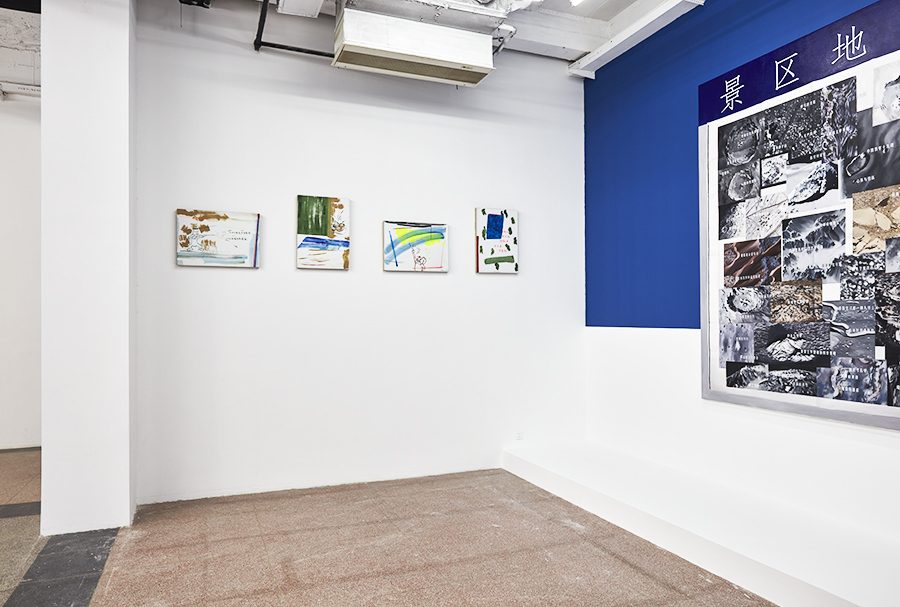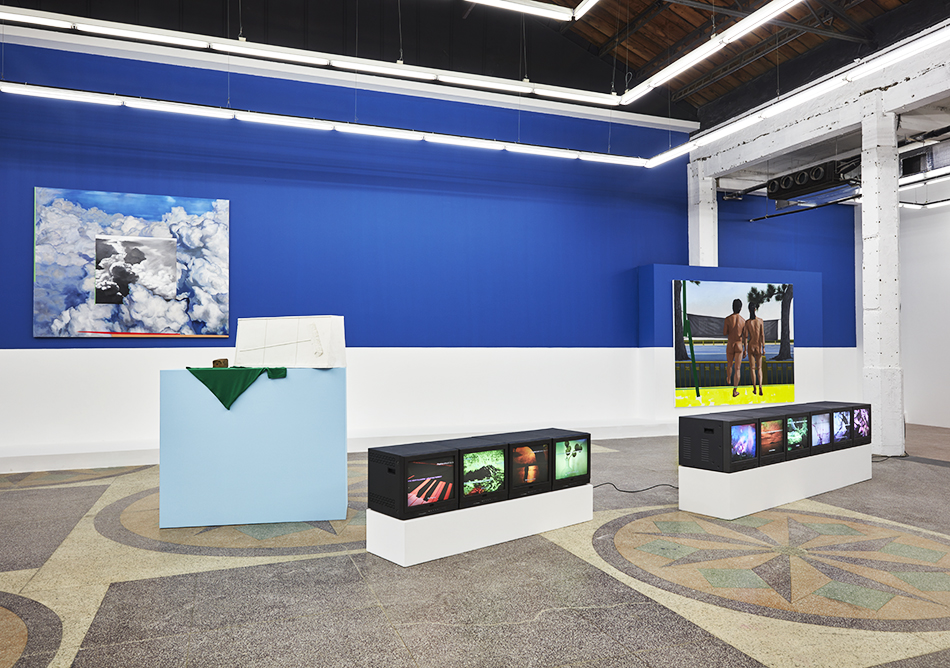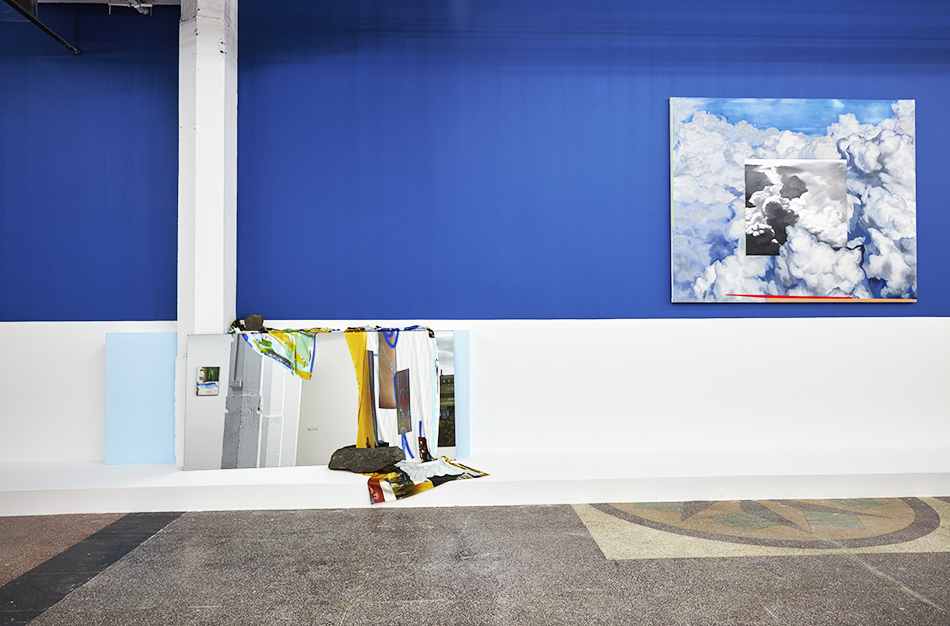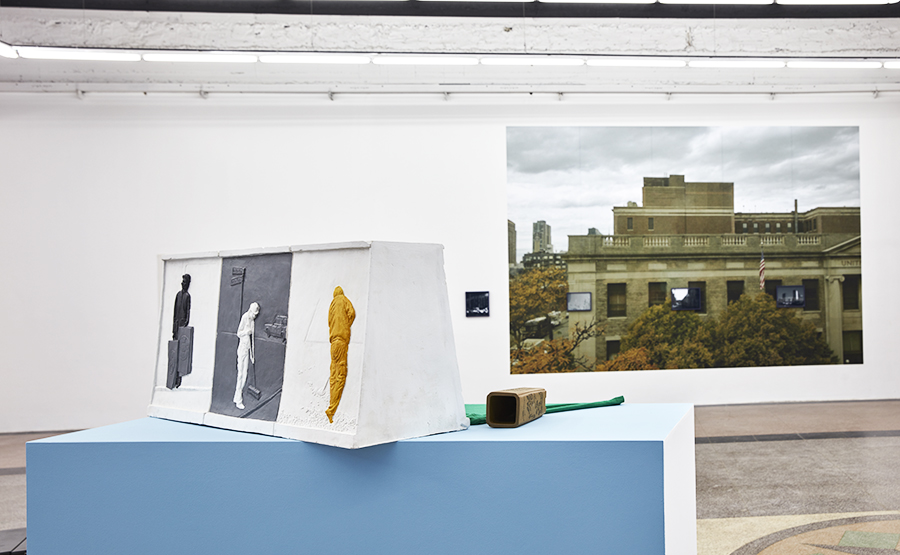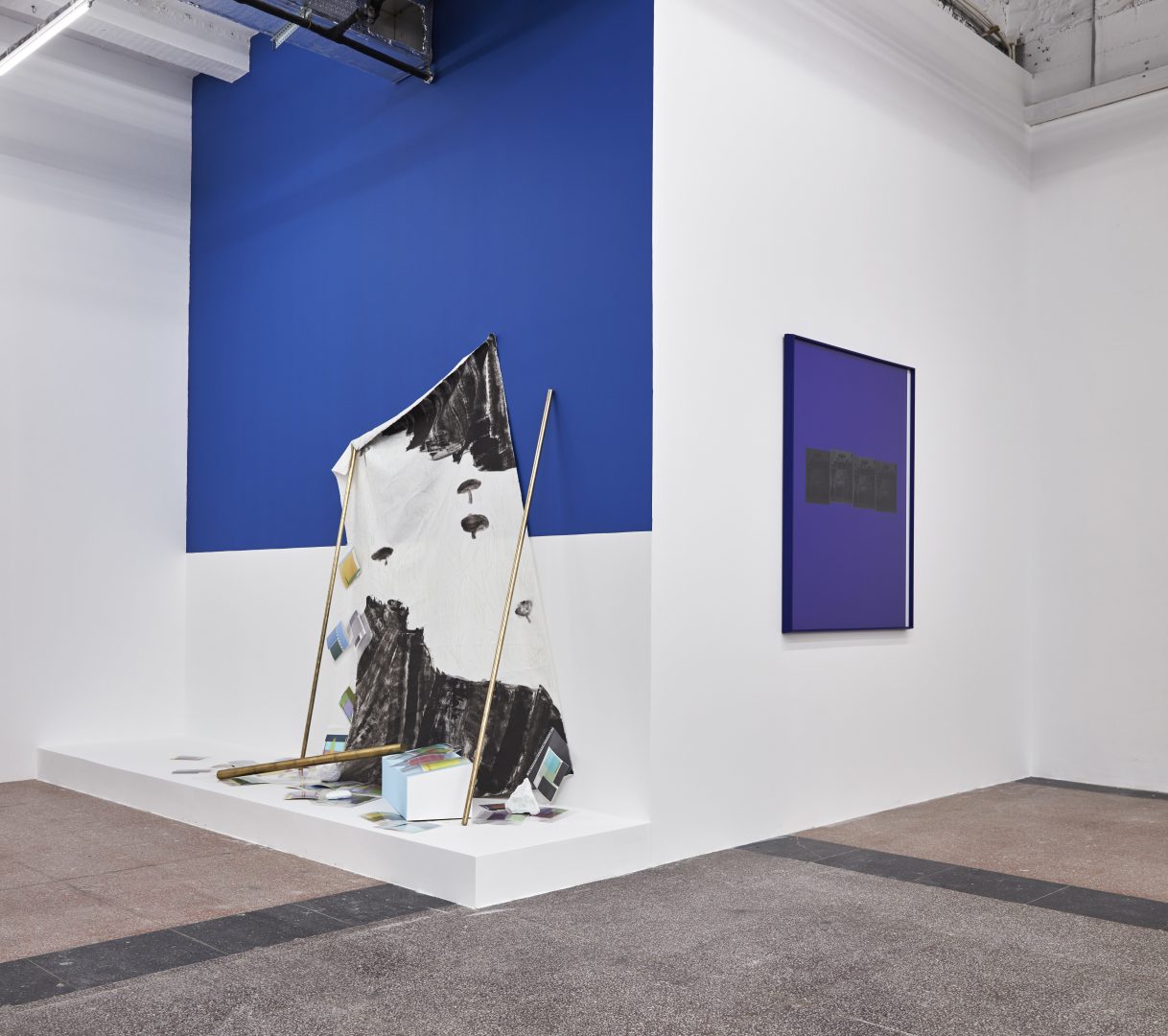2016.03.18 – 2016.04.25
Liu Ding: Li Jianguo Born in 1952
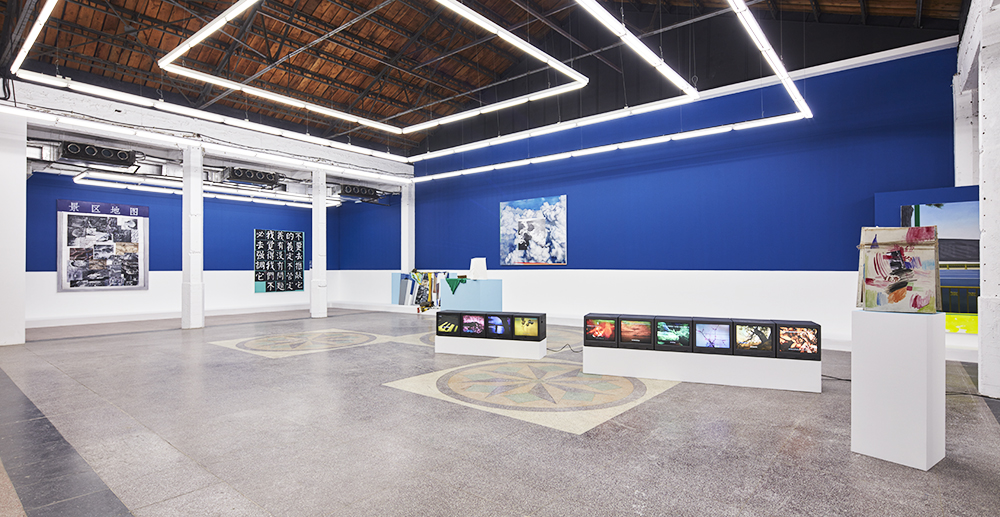
Antenna Space is proud to present Liu Ding’s solo exhibition, Li Jianguo Born in 1952, on view from March 18 to April 25. The character of the exhibition title borrows his name from an eponymous song released by the Beijing rock band 43 Baojia Street in 1997. Just as the protagonist of the song (whose last name, jianguo, literally means “the founding of the nation”) was emblematic of an entire generation of Chinese who were coming of age in the 1990s: he has a good job, he lives a good life, he has his wife, child, relatives and friends, but he can’t help feeling lost still, Liu Ding depicts the complex ideological stamping and historical constructs that shape and define the generations born after 1949 (the founding of the People’s Republic of China) through recounting a series of “anecdotes” in his exhibition. As the song goes, “You must have seen him somewhere, his name is Li Jianguo. If you ask who he is, he is every one of us.”
Liu Ding’s oeuvre has a distinctive quality of essay-writing and pays recurrent attention towards history. Since 2010, he has carried out an expansive research on the subject of the legacy of socialist realism, which is realized through writing, making of artworks and exhibitions. This ongoing research project takes socialist realism as a historical vantage point to reconsider and re-evaluate its persistent influence as an operative vehicle for the logic and ideology of social structures and organization on the values of contemporary culture and spirits in China. This research also attempts to reveal and analyze the fact that socialist realism still persists as a fundamental basis for the practice and discourse of contemporary art in China today.
Li Jianguo Born in 1952 marks Liu Ding’s second solo exhibition at Antenna Space. The artist positions this exhibition in an embedded dialogue with his previous exhibition Lake Washington held in the same space in 2014. In Lake Washington, the artist provided a detailed account of his personal journeys, subsequently involving deep descriptions (to borrow the archeological term) of the multi-layered, interwoven and hidden ideological frameworks. Li Jianguo Born in 1952 is a continuation of his method of “historical writing” in his art making, in which he takes his own perspective as the starting point and fuses his personal, lived experience with ideological frameworks, thereby weaving them into a portrait of Li Jianguo: an ideological individual who is at once particular and universal.
The exhibition features more than 30 new works by the artist, all of which were created subsequent to his presentation of a series of socialist realism-themed oil paintings and poetry in the 14th Istanbul Biennial and the Asia-Pacific Triennial of Art in 2015. A dual-narrative structure permeates this current exhibition; rather than a portrait of Li Jianguo, it is a personified, historical, and detailed account of the value system that grounds the world in which Li exists. The interlacing narratives of both personal and social events outline the positions, experiences, and choices of an individual situated in cultural politics, and produce a picture of a personified social domain and political history. Liu Ding’s practice is a long-term project that traces contemporary art and discourse to its intellectual underpinning and origin; by examining both history and the present, the artist aims to establish a fundamental position and a starting point for self-understanding and self-narration. His undertaking reflects a persistent search for potential horizons that allow for a thorough investigation of cultural subjectivity, and proposes to comprehend the cultural forms and values in China today through the problematics of “origin” and a holistic historical perspective.
About the artist:
Liu Ding was born in Changzhou, Jiangsu province in 1976, currently based in Beijing as an artist and a curator. His work has been shown at numerous art institutions including Tate Modern, Turner Contemporary, Arnolfini, UK; Kunsthalle Wien, Vienna; Astrup Fearnley Museum of Modern Art, Oslo; São Paulo Muse¬um of Art, São Paulo; ZKM, Karlsruhe; Kunstmuseum Bern, PasquArt Biel, Switzerland; Fondazione Sandretto Re Rebaudengo, Turin; Seoul Museum of Art; Luggage Store Gallery, San Francisco; Frye Art Museum, Seattle; Iberia Center for Contemporary Art, Beijing; Museum of Contemporary Art Shanghai; and Taipei Fine Arts Museum, Taipei. He has participated in various biennials such as 2015 Istanbul Biennial, 2015 Asia Pacific Triennial, 2014 Shanghai Biennial, 2012 Taipei Biennial, Chinese Pavilion of 2009 Venice Biennial, 2008 Media City Seoul, and 2005 Guangzhou Triennial. He has co-curated Little Movements: Self-Practice in Contemporary Art at OCAT, Shenzhen (2011) which has travelled to Museion in Bolzano, Italy (2013) as well as Shenzhen Sculpture Biennale in 2012. His writing and editorial works include: Little Movements: Self-practice in Contemporary Art (Guangxi Normal University Press, 2011), Little Movements II: Self-practice in Contemporary Art (Walther König, 2013), Accidental Message: Art is not a System, not a World (Lingnan Art Publishing House, 2012), and Individual Experience: Conversations and Narratives of Contemporary Art Practice in China from 1989 to 2000 (Lingnan Art Publishing House, 2013).
Installation Views
Artworks
-
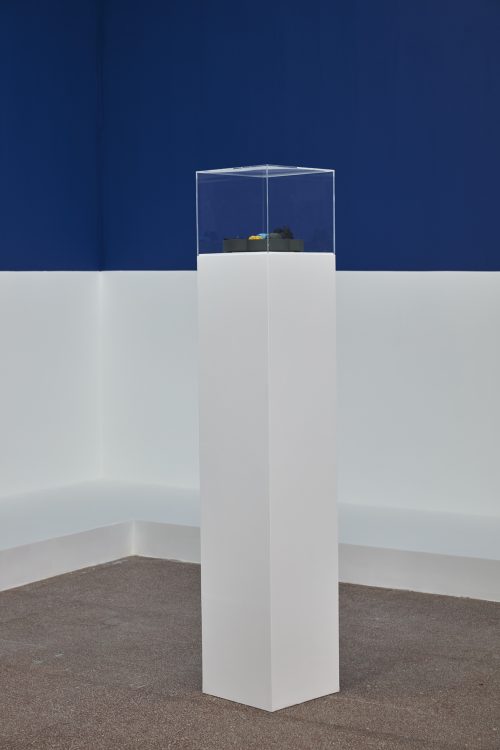
Twilights
3D printed objects
21 x 28 x 12 cm
2016The collectibles wenwan is various kinds of collectables famously circulate among Chinese literati. This set of collectible has been scanned, magnified, and produced using a 3D printer.
作品信息Information -
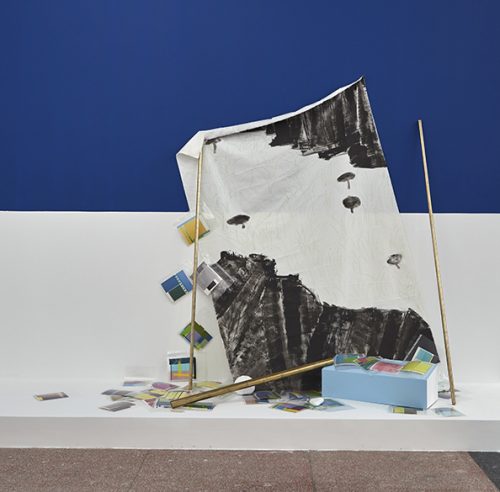
1988 Language as Issue
Oil on canvas, brass sticks, documents
Dimension variable
2016In the aftermath of the “85’ New Wave Movement”, some Chinese art critics put forward the issue of “purification of language”, turning the deliberation of the artistic language a visible debate in artistic practice. Artists in art academies, state-employed art critics, independent critics, alongside with young artists emerging from the “85’ New Wave” came forth to express their viewpoints. This discussion died down gradually after the 1989 China Avant-garde Exhibition. In this process of debate, the issue of the art language became a touchstone, reflecting the footholds of various value systems.
作品信息Information -
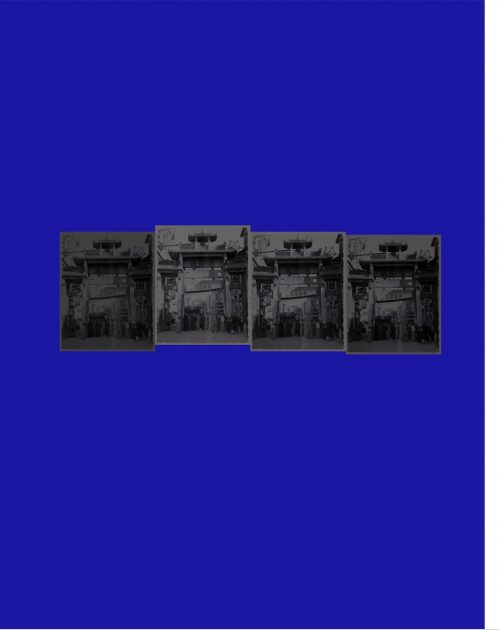
The Sorrows and Joys of Middle Age
Photo
150 x 120 cm
2016All four old photographs of the same content are laid out side by side, each of differing brightness, on the surface of a deep blue background. In the photograph, mid-aged men, all dressed in long-sleeved shirts lined up in front of an honorific arch, posing for a group portrait. On the arch, there hangs a banner that reads: the sorrows and joys of middle age. This is a photograph I have found by chance. The era to which the characters in the photograph belong to can hardly be determined. What is definite is only the mid-aged men and the characters in the banner.
作品信息Information -

Beijing in 2015
Photography
10 pieces in various dimensions
2016Since 2013, Beijing has experienced little changes. Still, it’s not quite the same.
作品信息Information -

Talks of Ten Figures
Video installations, ten-channel video
2016In Talks of Ten Figures, ten short texts about art run like “bullet subtitles” (comments inserted by viewers across films and TV series) across ten screens. These paragraphs that are like celebrity quotations consist of excerpts, as well as rephrased and rewritten texts put together based on a close study of the discourses and tones regularly found in historical cultural narratives. Similar to 1999, a sound installation presented in the Shanghai Biennale in 2014, this work reveals a collective narrative in history through anonymous commentaries.
作品信息Information -

Li Jianguo
Oil on canvas
230 x 280 cm
2016The painting depicts the backs of two middle-aged man and woman. Both naked and slowly receding into the far horizon. It seems they are faced with the endless hurdles ahead of them.
作品信息Information -

Gestures
Oil on canvas
205 x 250cm
2016In the depth of the pictorial plane and the clouds hides such a line of characters, which writes: “All artists wish you a healthy body.” Every time I read a text of such a tone and phrasing, I feel somewhat unsettled.
作品信息Information -
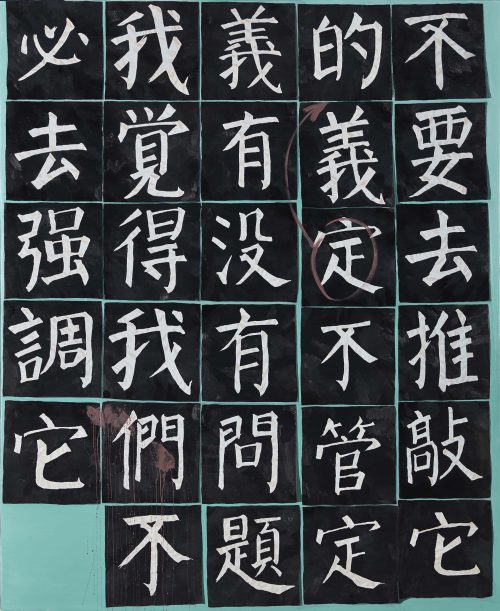
Marks
Oil on canvas
250 x 205 cm
2016On the occasion of a public talk in 1956, the Chinese literary theorist Zhou Yang proclaimed that regarding the implementation and promotion of Socialist Realism, one
“does not deliberate its definition. I feel that we do not need to stress it regardless of whether the definition has its fault or not.” His proposition gave an essential push towards the wide spread, interpretation and internalization of socialist realism among the Chinese population, and helped legitimize the party’s ideological hijacking of socialist realism. In his remarks, his repeated utterances of “Do Not, Leave it Alone and Do Not Stress” still lurks in the foundation for the acquiring, understanding, narratives of phenomena and concepts in today’s cultural field in China.作品信息Information -

Park Maps
Oil on canvas
280 x 230 cm
2016Towards the end of the 1970s, the previously strangled political atmosphere was loosening up in China, igniting the thirst of the entire society towards the new world and new knowledge. The instinct to take hold of and to interpret information has exited throughout the economic reform until today. This work appropriates the overview maps appearing at the entrance to parks and scenic spots, dotting a map that is a collage of all kinds of celestial surfaces, with names of intellectual movements and titles of books popular from the end of the 1970s. The result is a spectacle of seemingly directionless cultural movements.
作品信息Information -
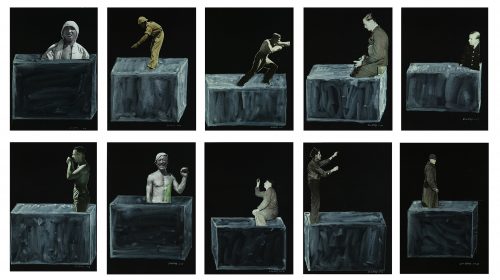
Figures Taken out of Context
Collage
30 x 21 cm (10 pieces)
2015Figures Taken out of Context is a series of 10 collages, all of which feature common people or soldiers who have experienced different kinds of warfare. These characters have been cut out and extracted from their original settings, pasted onto black cardboard paper. I have painted pedestals for each of these extracted characters on paper so that they appear like statues. The viewer can barely make out the era and status of these characters based on their clothing and appearances. Due to the loss of context in these images, there is no possibility to determine more precisely such coordinates as the time of existence, actions taken, roles and missions for these characters.
作品信息Information -
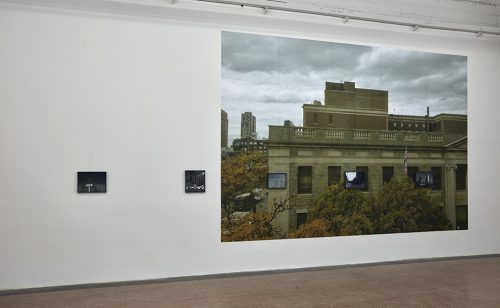
The United States
Wall paper
344 x 500 cm
2016This is a spur-of-the-moment photograph taken on the streets of New York. It is sufficient for a foreign visitor to show that he has been to America with such a photograph. Similarly, to enquire into the concept of the United States from the perspective of China is not unlike this photograph: an image of clarity, but one preventing deeper access. To China, the United States remains an other, even though this other has been around for nearly a century now. In this exhibition, the States will be present-as both an “other,” and a “witness” to this event of story-telling.
作品信息Information -
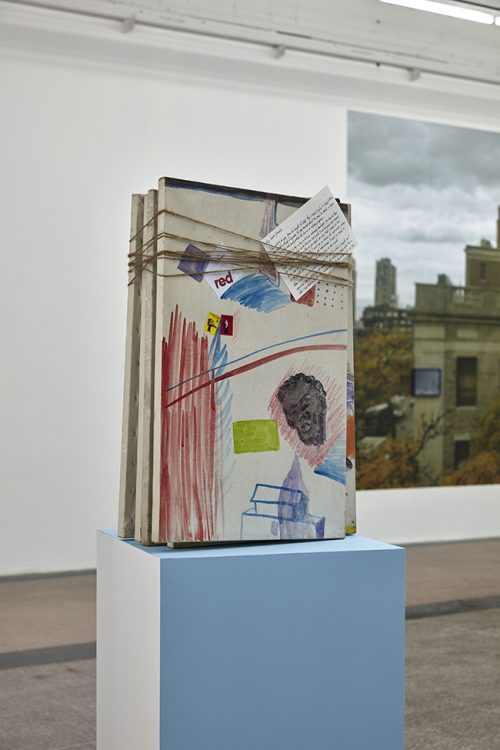
Message
Painting installation
6 paintings, letter, hemp rope
Dimension variable
2016By the end of 1985, American artist Rauschenberg visited Beijing and Tibet. The Chinese art history has given this particular trip, and his exhibition a very prominent role, attributing the transformation of artistic practice of many artists and that of the Chinese art field to his exhibition. This group of works was made by pretending to be Rauschenberg offering his friends in the Beijing art world a present and a letter addressed to them.
作品信息Information -
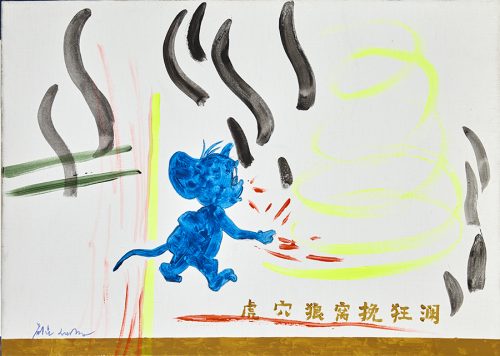
Apolitical Figures
Acrylic on canvas
70 x 55 cm each
2016In this set of graffiti-esque paintings, the images of the cat and the mouse as in the American cartoon Tom and Jerry appear over and over again, together with confrontational lines from selected poetries. Both components constitutes, without representing, each other.
(The lines are excerpts taken from The Tiananmen Poems, published in 1979. This anthology collects poetries that were people in Beijing voluntarily gathered at the Tiananmen Square, to mourn the death of the Country’s Premier Zhou Enlai, and to denounce “The Gang of Four.” In this work, I have deliberately omitted the terms in the original poems that were related to
“commemoration and condemnation” and chosen the vocabulary about sceneries and expressions of emotion. But the consciousness of class struggle still comes through such expressions.)作品信息Information -
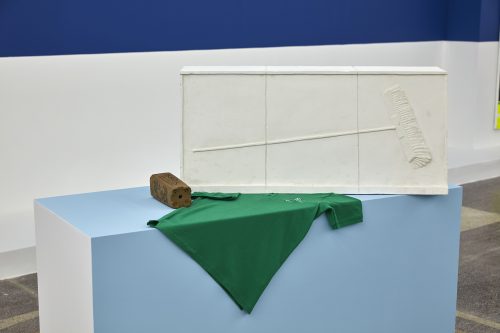
Course (as in political course)
Gesso, vase, polo shirt
60 x 130 x 150 cm (Wood Stage)
21 x 9 x 9 cm (Flowerpot)
100 x 45 x 32 cm (Plaster statue)
2016T his installation consists of a monument-like sculpture (which depicts the scene in which Beuys and his students used a broom to sweep up all the rubbish in Berlin’s Karl-Marx-Platz that followed the left-wing workers’ parade in May 1, 1972), a purple sand flower pot (made in the 90’s by renowned artisan Shi Yun, who was born in the 40’s and acquired the socialist realist artistic style before and during the cultural revolution) and a summer repairman polo uniform (on which embroidered a logo of Mercedes Benz). Course (as in political course) attempts to discuss the nature of sequences. Be it a political sequence, an ideological sequence or that of economy, sequences eventually frame the boundaries of one’s understanding and actions.
作品信息Information -
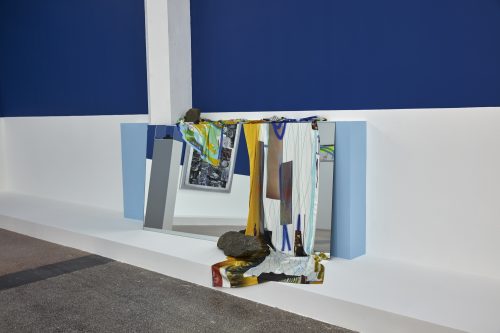
Torrents
Installation, mirror, stone, printed silk scarf
Dimension variable
2016In 1966, the epic musical The East is Red portrayed the most representative events that took place after the formation of the Chinese Communist Party. The style of story-telling in this musical has deeply affected the people of that generation. I have captured a few symbolic film stills from a documentary about it, both including images appearing on stage in the musical and those of the audience groups below the stage and woven them into the patterns of two silk scarves. In the gallery space, I arranged these two silk scarves, a reef stone, and a mirror into what seems like a scene from the Nature.
作品信息Information

